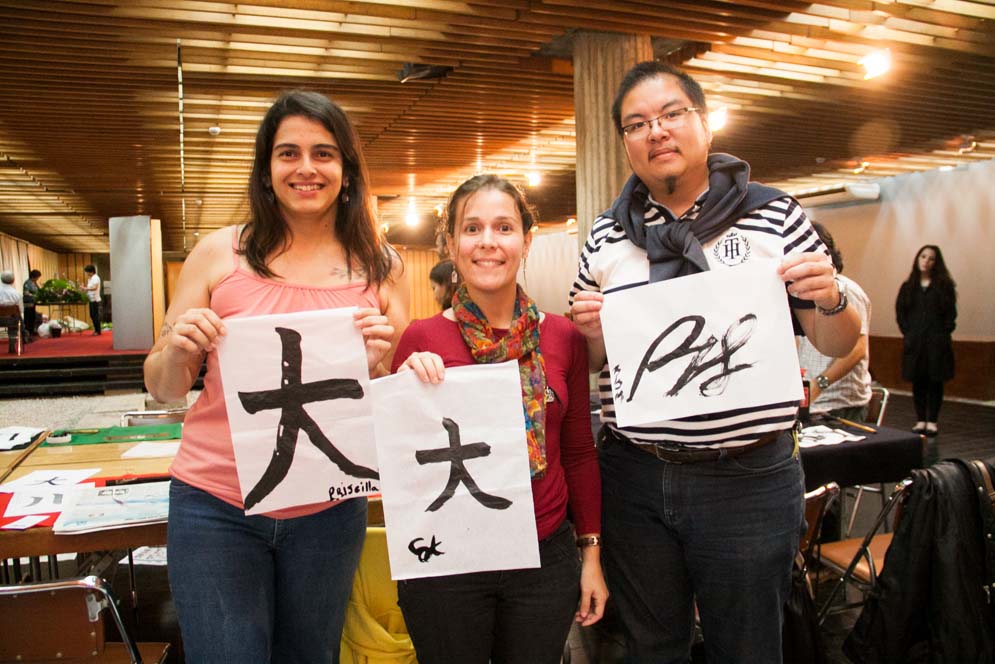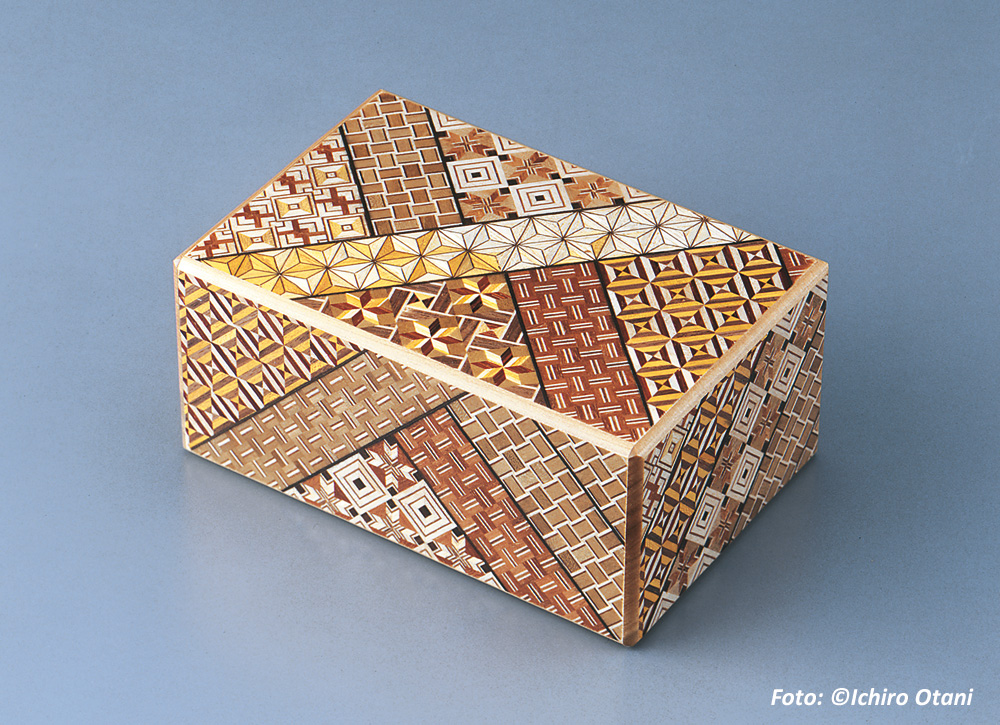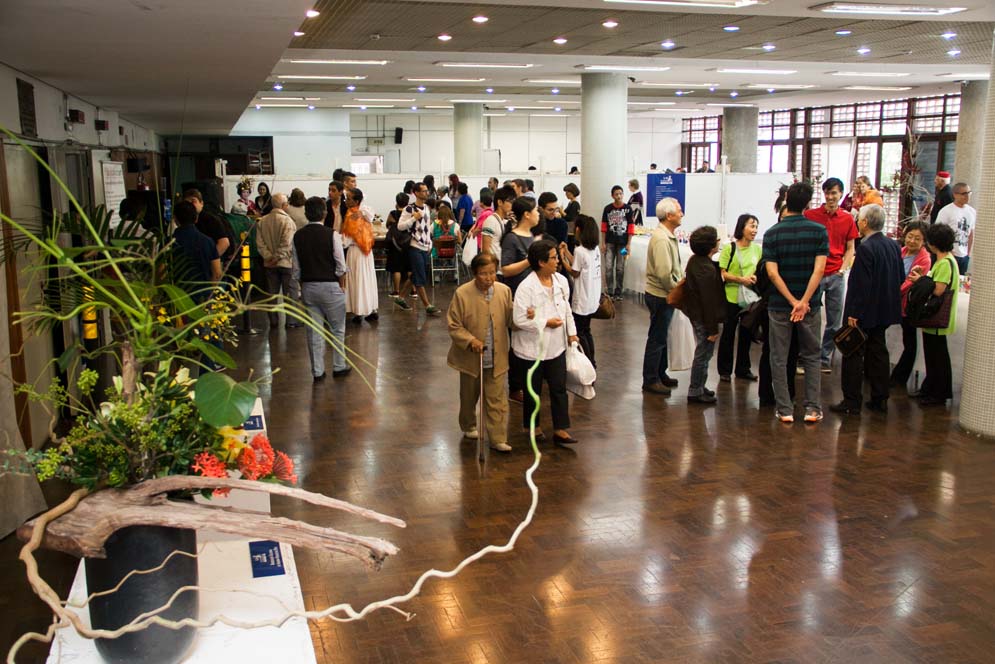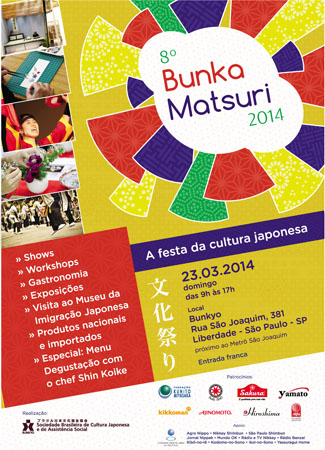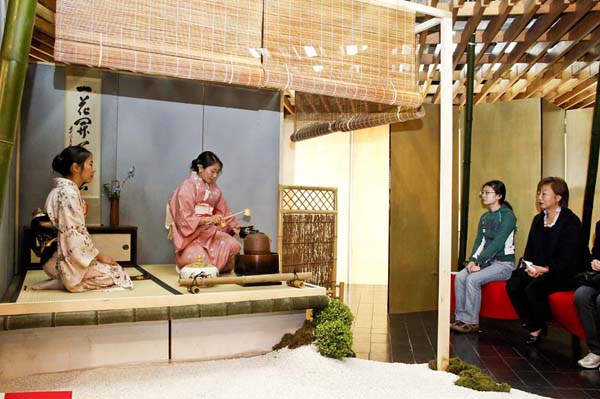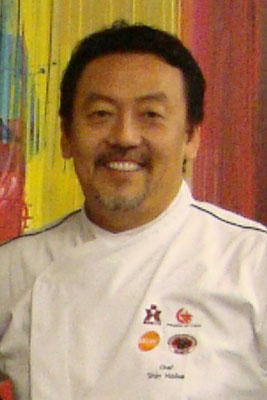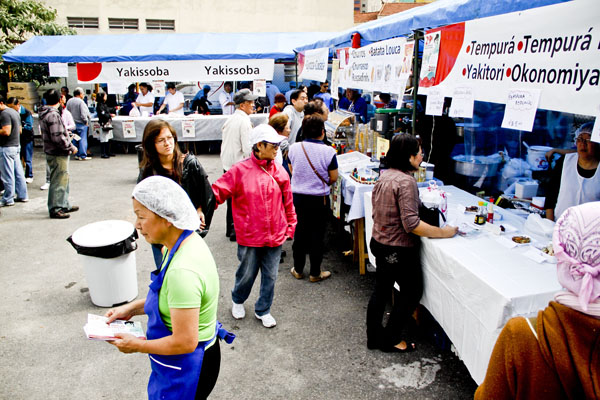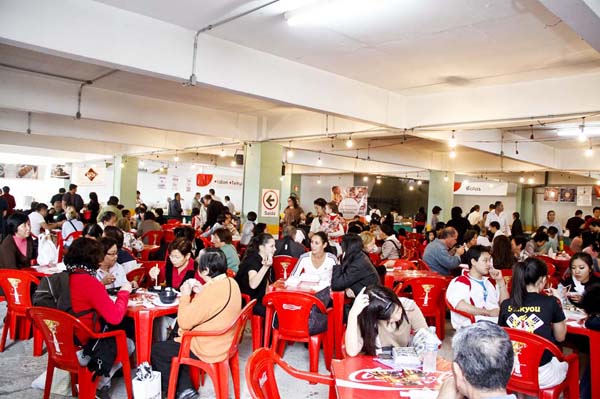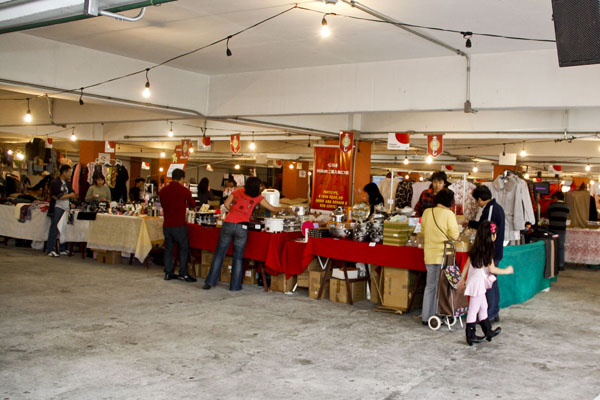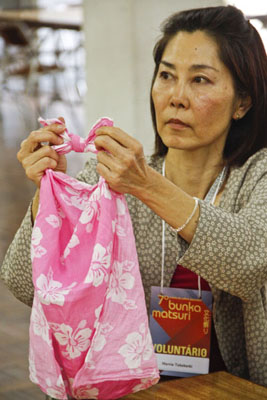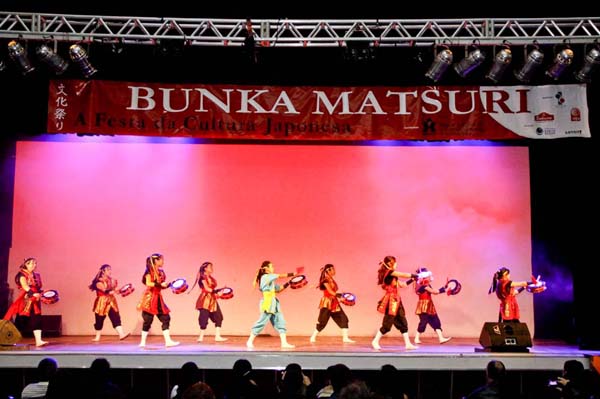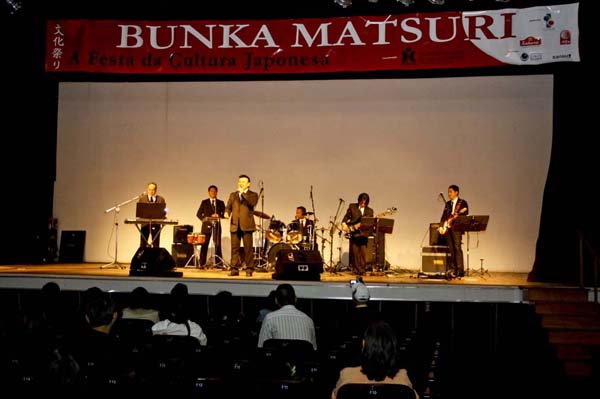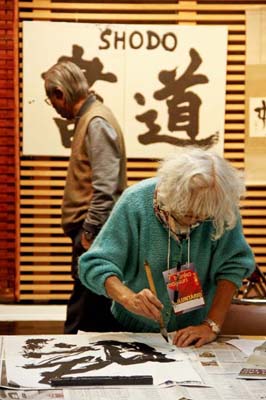Tea Ceremony as the Mythological Journey of the Hero
![tea cover image_edited-1]()
“Why do you study Tea?” This is a question I ask myself as often as I am asked. The usual answers perhaps are enough: “It is an aesthetic exercise; a Zen discipline; a unique means of social interaction.” Yet, I have wondered if there might be some other attraction to Tea; something not so apparent; something which, in particular, captivates the imagination of the non-Japanese participant. What I present here are a few personal observations and speculations concerning a possible connection between Mythology and Tea Ceremony.
FUNCTION OF MYTH
Mythology preserves and transmits essential cultural truths by creating a realm which speaks to our present situation through timeless images and symbols. Gods, goddesses, heroes, heroines, giants, spirits, and demons act out the entire panoply of our internal and external existence. Through their actions we can learn lessons vital to our personal and cultural well-being. Its symbolic written, visual, and spoken language enables a myth to penetrate to the deepest levels of our psyche. For this reason all faiths have a central myth from which its rituals and doctrines are formed.
Even historically-based faiths, such as Judaism, Christianity, Buddhism, etc., evolved their own mythologies in order to crystallize and proselytize their beliefs. According to Mircea Eliade:
“We are at last beginning to know and understand the value of the myth, as it has been elaborated in “primitive” and archaic societies where the myth happens to be the very foundation of social life and culture. In such societies the myth is thought to express absolute truth, because it narrates a sacred history; that is, a trans-human revelation which took place at the dawn of the Great Time, in the holy time of the beginnings. Being real and sacred, the myth becomes exemplary, and consequently repeatable, for it serves as a model, and by the same token as a justification, for all human actions. In other words, a myth is a true history of what came to pass at the beginning of Time, and one which provides the pattern for human behavior. In imitating the exemplary acts of a god or of a mythic hero, or simply by recounting their adventures, the man of an archaic society detaches himself from profane time and magically re-enters the Great Time, the sacred time.”
Although in modern society myth is no longer at the center of life, we still have rituals which are central to our communal and personal growth. Ritual is a natural outgrowth of myth. Even if the symbols are not comprehended, they are usually apprehended. So long as a ritual has the power to move one on a subliminal level, it retains its importance within the life of the community.
Even though the outward forms of myth reflect the culture from which it developed, the content of all myths follows patterns which cut across cultural barriers. The farther away from specific religious doctrines the myth and its connected rituals become, the more it transcends its cultural base and speaks universally.
ZEN AND TEA
The Way of Tea has undergone many transformations since its origins j~ 7th Century Chinese Buddhist temples. Eventually Tea died out in China, but continued to flourish in Japan through the efforts of Zen ‘Buddhist priests. As Tea moved out from the confines of the temple into the circles of the aristocracy it became not only a spiritual expression, but a social event as well. The social aspects of Tea became so prevalent that its Zen foundation was almost completely obfuscated.
Today the social aspects of Tea are uppermost in the minds of most Japanese practitioners, who generally are women for whom doing Tea is a social grace acquired in preparation for marriage. However, the spiritual aspects of Tea, as exemplified in Zen, are not completely forgotten even if they are not widely applied.
Since Zen looks beyond the symbol to the thing, the stereotypes that most of us have constructed concerning color, sex, and age, as well as the dogmas of ethnic-bound cultures, are seen to be man-made, not part of the nature of things. Each person is structured, or “coded”, to live best in his particular transaction with the Great Tao; he has his private Tao. As each of us opens himself to the operation of his secret code, he progressively functions more harmoniously…. The same inner coding or wisdom that heals a cut or mends a broken bone can heal the psychic wounds that each of us suffers.
The word Zen is the Japanese form of the Chinese word Ch’an, which is the Chinese form of the Indian Dhyana, meaning a particular kind of meditation. When monks brought Ch’an to Japan in the twelfth century, it developed even more rapidly and influenced the culture even more profoundly than it had in China … It shaped not only the religion of the people but also the orientation of the creative workers in sculpture, painting, architecture, landscape gardening, house furnishing, the theater – even bushido, the code of the warrior, and the “arts” of swordsmanship and archery.
SYMBOLS AND THE COLLECTIVE UNCONSCIOUS
The genuine creative act relies upon the intuitive connection between outer phenomena and an inner perception of the significance of such phenomena in order to give expression to further interpretation of the meaning of the phenomena. All art is symbolic. The painting of a tree is not a tree, but a symbol in coloured pigments representing what we call a tree. This holds true whether the representation is “realistic” or “abstract”. The artwork is an expression of the artist’s inner response to the
idea of a tree. It is not even necessary for the artist to actually see a tree.
Symbols in any form rise from the unconscious. Profound symbols rise from deep regions and consequently resonate in the deepest levels of the psyche of those who experience them. As Jung has postulated:
“In addition to our immediate consciousness, which is of a thoroughly personal nature and which we believe to be the only empirical psyche (even if we tack on the personal unconscious as an appendix), there exists a second psychic system of a collective, universal, and impersonal nature which is identical in all individuals. This collective unconscious does not develop individually but is inherited. It consists of pre-existent forms, the archetypes, which can only become conscious secondarily and which give definite form to certain psychic contents.”
I feel that the ritualized movements, prescribed order of procedures, codified manners, patterned speech, physical setting, utensils, and symbolic nature of Tea place the participant in proximity to mythic archetypes and in so doing, the guest relives the ancient and sacred journey of the hero.
THE PRACTICE OF TEA
![chashaku]() T
There are two main forms of expression for the practice of Tea. One is the
chakai (tea gathering) where many people are served sweets and a bowl of thin tea (powdered green tea leaves mixed with water and whipped until foam floats on the surface — called
usucha). The atmosphere is often rushed since there are many people to serve.
The other form of expression is the
chaji (tea event) consisting of a meal, two charcoal ceremonies, two types of sweets, thick tea (a large amount of tea mixed with water to the consistency of heavy cream-called
koicha), and usucha. It is given for a few people in a small tea house set in a garden. The chakai may take only twenty minutes; the chaji takes four hours with emphasis on allowing the underlying meaning of the event to make itself evident to the guests. It is the chaji held at noon during winter season (the time when a portable brazier is used) to which all parallels to myth shall be made.
THE MYTHOLOGICAL JOURNEY
The mythological hero, setting forth from his common day hut or castle, proceeds to the threshold of adventure…. Beyond the threshold, then, the hero journeys through a world of unfamiliar yet strangely intimate forces some of which give magical aid (helpers)…. When he arrives at the nadir of the mythological round, he undergoes a supreme ordeal and gains his reward… intrinsically it is an expansion of consciousness and therewith of being (illumination, transfiguration, freedom). The final work is that of the return…. At the return threshold the transcendental powers must remain behind; the hero reemerges from the kingdom of dread (return, resurrection). The boon that he brings restores the world (elixir).
The hero receives a challenge, often from the gods, to perform a specific task. Usually the task involves going to an unknown land and bringing back either a sacred or magic object or a message from an oracle. This often involves participation in secret rites and initiation rituals. The guest receives an invitation from the host, the Omnipotent Creator of the chaji. The host selects the time, setting, theme, utensils, menu, sweets, tea, and all the other components necessary to do a chaji. The invitation is a formal summons to gather for a specific reason.
MYTHIC TIME/TEA TIME
Tea has its own time, like mythic time. It is a time set aside from time, from the everyday perception of events set in chronological sequence. During the chaji there is a sense of suspended
time—timelessness.Ironically, despite the ‘timeless’ feeling the guests sense, the chaji is carefully regimented. When to prepare food, when to build the fire, when to serve the tea, all depend on a timing as precise as ballet.
A Tea ceremony is a seated dance, an orchestrated ritual, as deliberate, paced, and formal as the elevation of the host in a Catholic Mass.
If all is ready for the guests to enter when they arrive, the walk outside will have been sprinkled with water. The gate will be open and will also have been sprinkled. The guests arrive and enter the main gate and go to a waiting room. The last guest closes and locks the gate. The outside world is shut away. It is now time to prepare to encounter the mystery.
PREPARATION FOR THE JOURNEY
The guests are served some hot water from the kettle. The water is often from a shrine or temple and is, therefore, sacred water. It is the water which will be used for cooking and for making the tea. But that is later; now it is to refresh them after their travel.
They are told to go outside to a waiting area when they have finished. After a few moments of quietly contemplating the garden, they hear the splash of water as the host pours fresh water into a stone basin near the tea house. Soon the host is seen approaching. Starting with the main guest they move forward in a diagonal line. They make a deep, formal, silent bow to the host. The host returns to the tea house; the guests sit again. All is ready; the guests may enter the tea house.
![teagarden]()
THE FLIGHT THROUGH THE FOREST
The first guest proceeds slowly through the garden. The other guests remain seated. A tea garden usually has no flowering plants. Its emphasis is on the color green with its variety of hues and its symbolic relationship to life and growth. The tea garden does not give the viewer a spacious expanse of shrubs, trees, flowers, grass and stones. Rather, it is an echo of the primordial forest of trees, shrubs, and moss.
Thus, let a person take a delight in the natural harmony of heaven and earth; let him transplant mountains, rivers, trees and rocks to his own fireside and experience the five elements (within his own self). Let him draw from the source of heaven and earth and savor in his mouth the taste of the wind. Is it not mighty? Pleasure in the spirit of the harmony of heaven and earth—that is the Way of chanoyu (Tea Ceremony).
The guest is lifted above the green which is on all sides on stepping stones called
tobiishi (flying stones).
A great many symbols and significations to do with the spiritual life and, above all, with the power of intelligence, are connected with the images of “flight” and “wings”. The “flight” signifies intelligence, the understanding of secret things and metaphysical truths. If we consider the “flight” and all the related symbolisms as a whole, their significance is at once apparent: they all express a break with the universe of everyday experience; and a dual purposiveness is evident in this rupture: both transcendence and, at the same time freedom are to be obtained through the “flight”. The roots of freedom are to be sought in the depths of the psyche, and not in conditions brought about by certain historical moments. The breaking of the plane effected by the “flight” signifies an act of transcendence, the longing to go beyond and “above” the human condition, to transmute it by an excess of “spiritualization” to see the human body behaving like a “spirit”.
The tea garden is named
roji (dewy path) and the host takes great care to see that the entire garden is wet whenever the guests walk through it. The ideal is to have the moisture just beginning to dry in places. For not only is it the Great Forest Primeval, it is the Dawn of Existence as the Day of Creation is approaching. Okakura referred to the 17th-century Tea Master Enshu’s feeling for the roji as follows:
He wished to create the attitude of a newly awakened soul still lingering amid shadowy dreams of the past, yet bathing in the sweet unconsciousness of a mellow spiritual light, and yearning for the freedom that lay in the expanse beyond.The hero leaves his country and travels through uncharted lands. The forest represents the severing of ties with those things which are familiar and recognizable. The forest is dark, foreboding, encompassing, but above all, visually separates us from the comfortable landmarks of our native surroundings. The forest is essentially a manifestation of the Earth Mother. By yielding to Her we are refreshed and nurtured. Although mysterious, sometimes frightening, She has abundant life – lush, fertile and primitive.
In the original sense of the word ‘garden path’, roji, ro was interpreted as ‘to manifest’, and ji as ‘heart’. Thus its meaning was to reveal ones ‘inner nature’. ‘Garden path’ signified eradicating the eternal suffering of the world along with its root causes, and manifesting the Buddha-nature of eternal truth and reality.
PURIFICATION
The first guest comes to a gate and opens it to enter the Inner Roji. For the first time, perhaps, the edge of the tea house can be glimpsed. Near it is a stone basin (
tsukubai) filled with water with a wooden ladle across the top of it. The guest crouches before the tsukubai and scoops out a ladle full of water. The guest rinses the left hand, then the right hand, then pours water into the cupped left hand, sips it, and rinses the mouth, emptying the water into the area in front of the basin. The ladle is held upright so that the rest of the water flows out down the handle. The ladle is put back. The dust of the world has been washed away; the body and the soul have been made pure. This ritual is the same as that done before entering a Shinto Shrine so that the visitor stands before the god in a cleansed, i.e., purified state. And the Brahmin washes in the Ganges; and Christ was baptized in the Jordan; and Catholics are blessed with Holy Water.
THE THRESHOLD OF EMPTINESS
The guest goes to the tea house, at which time the second guest starts through the garden. The small square door (
nijiriguchi— humbling entrance, approximately 68cms) to the tea room has been left slightly open. The guest steps upon a large stone (
yakuseki) in front of the door, crouches, and opens the nijiriguchi. This is not a humble entrance, such as a rustic old farmhouse door. This is, indeed, a ‘humbling’ entrance. To enter the Inner Sanctum, the hero must get rid of all vestiges of pride, for it is hubris which usually causes the hero’s downfall. The guest’s sandals are left outside and the guest crawls into the tea room.
One of the names for the tea room is
sukiya, place of emptiness, from
“suku”: to be empty. Zen master Ikkyu, under whom many tea masters studied Zen, had this to say concerning emptiness:
All things inevitably become empty, and this emptying process signifies a return to the source of original being.The concept of emptiness is central to Zen Buddhism and also plays an important role in mystical Taoism. The Ten Oxherding Pictures with Commentary and Verses solidified in the 12th century to become a major Zen parable showing the path to enhightenment. The Eighth Picture depicts enlightenment as an empty circle. The following verse accompanies it:
Whip, rope, Ox and man alike belong to Emptiness.
So vast and infinite the azure sky that no concept of any sort can reach it.
Over a blazing fire a snowflake cannot survive.
When this state of mind is realized comes at last comprehension
of the spirit of the ancient Patriarchs.And from a Taoist Mystical treatise entitled
The Book of Consciousness and Life, the eighth and final step of meditation is:
Empty Infinity
Without beginning, without end, without past, without future.
A halo of light surrounds the world of the law.
We forget one another, quiet and pure, altogether powerful and empty.
The emptiness is irradiated by the light of the heart and of heaven.
The water of the sea is smooth and mirrors the moon in its surface
The clouds disappear in blue space; the mountains shine clear.
Consciousness reverts to contemplation; the moondisk rests alone.The picture which accompanies the above verse is an empty circle.
A TEMPLE OF NUMBERS
![tatami]() T
The ideal tea room is 4.5 tatami mats (approximately 3 square meters: see Figure 2). This dimension is significant because it divides the room into 9 equal parts of .5 tatami each (see figure 3) Nine is considered in many cultures to be a number symbolizing completion. Its divisions contain all the other numbers:1&8, 2&7, 3&6, 4&5; and if the numbers 1 through 9 are added together they equal 45 and these digits add up to 9. Also, any single digit multiplied by nine yields a product which adds upto9: 2×9=18=9; 3×9=27=9 etc. But beyond these numerological connections, the tea room can be considered a temple. Seventeenth Century Tea Master Sen Sotan said:
It was on the basis of (the) interpretation (of the garden path meaning ‘to manifest the heart’) that the tea-room was given the name roji, in that it is the temple in which the Buddha-nature is manifested within us.Joseph Campbell comments thus on the function of myth and temples:
“For a culture still nurtured in mythology the landscape, as well as every phase of human existence, is made alive with symbolical suggestion. The hills and groves have their supernatural protectors and are associated with popularly known episodes in the local history of the creation of the world. Here and there, furthermore, are special shrines, wherever a hero has been born, has wrought, or has passed back into the void, the place is marked and sanctified. A temple is erected there to signify and inspire the miracle of perfect centeredness; for this is the place of the breakthrough into abundance. Someone at this point discovered eternity. The site can serve, therefore, as a support for fruitful meditation. Such temples are designed, as a rule, to simulate the four directions of the world horizon, the shrine or altar at the center being symbolical of the Inexhaustible Point. The one who enters the temple compound and proceeds to the sanctuary is imitating the deed of the original hero. His aim is to re4earse the universal pattern as a means of evoking within himself the recollection of the life-centering, life-renewing form.”
SACRED MANDALAS
It was the custom in ancient India, as elsewhere, to construct temples based upon a mandala, a design often used for meditation.
The Mandala’s basic motif is the premonition of a center of personality, a kind of central point within the psyche, to which everything is related, by which everything is arranged, and which is itself a source of energy… This center is not felt or thought of as the ego, but if one may so express it, as the self. Although the center is represented by an innermost point, it is surrounded by a periphery containing everything that belongs to the self – i.e. paired opposites that make up the total personality. This totality comprises first of all, the personal unconscious, and finally an indefinitely large segment of the collective unconscious whose archetypes are common to all mankind.
The design of the Hindu temple is based upon a square. Usually quadrangular forms symbolize conscious realisation of inner wholeness; the wholeness itself is most often represented in circular forms.
Quarternity is reflected in the four seasons, the four directions of the wind, the four Gospels, the four sons of Horns, the Four Noble Truths of Buddha, the Four Virtues of Tea (Harmony, Respect, Purity, Tranquility) etc.
Great importance is attached to the establishment of the (Hindu) temple’s ground plan because it functions as a sacred diagram (mandala) of the essential structure of the universe. The mandala is a concentric figuration, usually a square divided into a number of smaller squares by an intersecting grid of lines. This arrangement of central squares with others that surround it is taken to be a microscopic image of the universe with its concentrically organized Structure. By constructing this diagram to regulate the form of the temple, a symbolic connection is created, binding together the world of the gods — the universe, and its miniature reconstruction through the work of man. Brahma occupies the central nine squares and is surrounded by various planetary divinities, including the Sun and Moon. The mandala is thus able to incorporate the courses of the heavenly bodies which are related to all recurring time sequences. It may also contain an image of the cosmic man. This cosmic figure is identified with the processes of the creation of the universe and its underlying structure. Profound significance is attached to the centre of the temple mandala, as it is here that the worshipper may experience transformation as he comes into direct Contact with the cosmic order. The plan of the temple is strictly oriented to the cardinal directions.
THE LO SHU AND THE HALL OF LIGHT
![9squares]() T
The nine-fold square is the configuration used for constructing the Chinese pattern known as the Lo Shu, the Writing from the River Lo. The Lo Shu is a magic square with the numbers 1 through 9 arranged in such a way that each column or row of three figures and each diagonal add up to the same number. At the center is the number 5 representing the five elements (fire, water, wood, metal and earth). The Lo Shu was used 1300 years ago by Empress Wu as the floor plan for a large temple she built and dedicated to heaven, called Ming T’ang or Hall of Light.
Except for room 5, each odd-numbered room had a single dais and each even-numbered room a double dais, making twelve in all, one for each month of the year. The Chinese year varied in length and citizens found it hard to keep their diaries in order. At the beginning of each month, an official, mounted the appropriate dais and read out the Proclamation of Space and Time so that everyone could be clear about the date. What gave the proclamation its special authority was the arrangement of the rooms.
The Lo Shu was in existence long before Empress Wu utilized it for the Ming T’ang. It was connected to early Taoist thinking which had a strong influence upon Chinese Buddhism.
Buddhism is said to have officially reached China during the first century A.D., and after some three hundred years of adjusting it to suit their established teachings of Confucianism and Taoism, the Chinese embraced it as their own. (it was the admittance of Taoist beliefs into Chinese Buddhism that laid the foundations for the school of Ch’an Buddhism, the parent of Japanese Zen.).
THE I CHING AND TEA
![ts5]() The I Ching (Book of Changes) is the major treatise for both Confucianism and Taoism. Its origins are lost in antiquity, but a version edited and annotated by Confucius has come down to our time. The underlying theme of the I Ching is change.He who has perceived the meaning of change fixes his attention no longer on transitory individual things but on the immutable, eternal law at work in all change. This law is the tao (and) was represented by the circle divided into the light and the dark, yang and yin. In the I Ching eight three-lined configurations consisting of varying combinations of broken (yin) and unbroken (yang) lines form the basis of a system of images which carry deep philosophical meaning. These trigrams are paired to form 64 hexagrams representing a complete life cycle. The connection between the eight trigrams of the I Ching and Tea can be seen in the use of the hakke bon in a procedure known as gyo no gyo daisu. This procedure came from China and from it the more simple procedures most people use today were derived. The hakke bon is a black lacquered round tray inlaid with a circular pattern of the eight trigrams grouped in what is called the Inner World Arrangement. This tray supports the chawan (tea bowl) and chaire (tea container) and rests upon the ten ita (heaven board) of the daisu (stand). The trigram K’an, the Abysmal, is in the north and represents winter; in the east is C/zen, the Arousing, spring; in the south, Li, the Clinging, summer; and in the west, Tui, the Joyous, autumn. These trigrams also represent midnight, morning, noon and evening, respectively, beginning with K’an and moving clockwise. The trigrams at the ordinal points represent the transitions from season to season and hour to hour. (It may be of interest to note that the trigram which rules the southeast, where the guests enter, is called Sun, the Gentle; its attribute: penetrating.) When read in sequence from Chen in the spring all eight trigrams comprise the cycle of a day, a year and a lifetime. The Inner World Arrangement was combined with the Lo Shu from ancient days. By superimposing the Inner Worid/Lo Shu arrangement upon the nine fold square of the 4.5 mat tea room we create a mandala representing the cyclic passage of time. The altar of the Hindu temple is at the center. The center room of the Ming T’ang, the temple built by Empress Wu, is empty. There is no trigram at the center of the tea room. The number from the Lo Shu for the center of the tea room is 5, which represents the unification of all things or, in other words, the Buddhist Void from which all things emerge and into which all things dissolve. The Void is the Great Emptiness reflected in the Eighth Oxherding Picture of Zen and the eighth stage of meditation from the Taoist ‘Book of Consciousness and Life’. During a chaji the bowl of tea is placed upon the center square for the guests to receive. Thus the center becomes the dynamic emptiness of the Buddhist Void, the Inexhaustible Point, the World Navel, the Place of Everlasting Spiritual Nourishment.
The I Ching (Book of Changes) is the major treatise for both Confucianism and Taoism. Its origins are lost in antiquity, but a version edited and annotated by Confucius has come down to our time. The underlying theme of the I Ching is change.He who has perceived the meaning of change fixes his attention no longer on transitory individual things but on the immutable, eternal law at work in all change. This law is the tao (and) was represented by the circle divided into the light and the dark, yang and yin. In the I Ching eight three-lined configurations consisting of varying combinations of broken (yin) and unbroken (yang) lines form the basis of a system of images which carry deep philosophical meaning. These trigrams are paired to form 64 hexagrams representing a complete life cycle. The connection between the eight trigrams of the I Ching and Tea can be seen in the use of the hakke bon in a procedure known as gyo no gyo daisu. This procedure came from China and from it the more simple procedures most people use today were derived. The hakke bon is a black lacquered round tray inlaid with a circular pattern of the eight trigrams grouped in what is called the Inner World Arrangement. This tray supports the chawan (tea bowl) and chaire (tea container) and rests upon the ten ita (heaven board) of the daisu (stand). The trigram K’an, the Abysmal, is in the north and represents winter; in the east is C/zen, the Arousing, spring; in the south, Li, the Clinging, summer; and in the west, Tui, the Joyous, autumn. These trigrams also represent midnight, morning, noon and evening, respectively, beginning with K’an and moving clockwise. The trigrams at the ordinal points represent the transitions from season to season and hour to hour. (It may be of interest to note that the trigram which rules the southeast, where the guests enter, is called Sun, the Gentle; its attribute: penetrating.) When read in sequence from Chen in the spring all eight trigrams comprise the cycle of a day, a year and a lifetime. The Inner World Arrangement was combined with the Lo Shu from ancient days. By superimposing the Inner Worid/Lo Shu arrangement upon the nine fold square of the 4.5 mat tea room we create a mandala representing the cyclic passage of time. The altar of the Hindu temple is at the center. The center room of the Ming T’ang, the temple built by Empress Wu, is empty. There is no trigram at the center of the tea room. The number from the Lo Shu for the center of the tea room is 5, which represents the unification of all things or, in other words, the Buddhist Void from which all things emerge and into which all things dissolve. The Void is the Great Emptiness reflected in the Eighth Oxherding Picture of Zen and the eighth stage of meditation from the Taoist ‘Book of Consciousness and Life’. During a chaji the bowl of tea is placed upon the center square for the guests to receive. Thus the center becomes the dynamic emptiness of the Buddhist Void, the Inexhaustible Point, the World Navel, the Place of Everlasting Spiritual Nourishment.
THE TEA ROOM, BUDDHA’S HEART, AND THE COURSE OF THE SUN
By tracing a line down the center of the tatami from
temaeza (the place where the tea is made in the northwest) through the center square, down the guests’ tatami and repeating the process starting in front of the
tokonoma (alcove), we arrive at the figure of the swastika, which is a mandala in itself, based on a four-fold square.
The swastika was the monogram of Vishnu and Siva in India, the battle-axe of Thor in Scandinavian inscription and a favourite symbol with the Peruvians. It is said to be the first of the 65 auspicious signs on the footprint of Buddha. It is described as “the accumulation of lucky signs possessing ten thousand efficacies (and) is also regarded as the symbol or seal of Buddha’s heart. The Swastika represents the “fire’s cradle” i.e., the pith of the wood, from which in oldest times in the point of intersection of the two arms the fire was produced by whirling round an inserted stick. On the other hand, according to the view most wide spread at the present day, it simply symbolizes the twirling movement when making fire, and on this, too, rests its application as a symbol of the sun’s course.
Thus the tea room becomes the nine-fold square mandala of the Cosmic Man containing the Swastika of Buddha’s Heart, which can also represent the circular course of the sun and in so doing, the passage of time as reflected in the day/year/life cycle of the Inner World Arrangement of the eight trigrams of the I Ching and the magic square of the Lo Shu. According to Aniela Jaffe:
“Every building, sacred or secular, that has a mandala ground plan is the projection of an image from within the human unconscious into the outer world. The city, the fortress, and the temple become symbols of psychic wholeness, and in this way exercise a specific influence on the human being who enters or lives in the place. (It need hardly be emphasized that even in architecture the projection of the psychic content was a purely unconscious process. ‘Such things cannot be thought up,’ Dr. Jung has written, ‘but must grow again from the forgotten depths if they are to express the deepest insights of consciousness and the loftiest intuitions of the spirit, thus amalgamating the uniqueness of present-day consciousness with the age-old past of humanity.’”
WORDS FROM THE SAGE
The guest goes to the tokonoma in the dimly lighted room. The tokonoma is placed in the north and is related to temple architecture. (In Chinese Ch’an monasteries the tokonoma was a special shrine before which monks burned incense, drank ceremonial tea, and contemplated religious artwork.) In the tokonoma is a scroll upon which is written a saying, usually philosophical and often from a Zen temple. It is frequently short – perhaps a single word – and somewhat cryptic.
And the hero, tired after the rigors of traveling through unknown lands, pauses a moment to rest and is greeted by an old sage who utters a few words of wisdom.
THE FURO MANDALA
The guest now goes to the
furo (portable brazier) and
kama (kettle). The round, three legged furo is placed on a square, black lacquered board (
isa). Inside the furo, along with ash and burning charcoal, is a
gotoku, a three legged metal stand supporting the kama. Although some furo do not use gotoku, the most commonly used ones do. The furo has two legs in back and one in front; the gotoku has two legs in front and one in back. Excluding the highly variable shapes of the kama, a schematic representation of the furo and gotoku reveals another mandala as seen from above. By drawing a line between the points of the furo and gotoku legs, respectively, we form two intersecting triangles going in opposite directions inside the round furo.
The standard style furo is made of clay (earth) and thus the arrangement of wooden ita, clay furo, burning charcoal, iron kama and boiling water represent the five elements.
FOOD FOR BODY AND SOUL
The last guest enters, closes, and locks the nijiriguchi. After the guests have each looked at the scroll, furo, and kama, the host enters and formally greets each guest, then explains the various items the guests have seen in the waiting room and the tea room. As far back as the Heian Period (794-1185 A.D.) evil influences were thought to flow from the northeast. (When Kyoto was founded a temple was built on Mt. Hiei in the northeast to protect the city.) The host’s entrance is in the southwest. The host absorbs the evil influences from the northeast and protects the guests who sit in the east facing the Western Paradise of Buddha.
A multi-coursed
kaiseki meal is served. Kaiseki means ‘bosom stone’ and comes from the old custom of Buddhist monks of placing warm stones inside their robes against the stomach to ease the pangs of hunger. Although today the meal has become very elaborate, originally it was meant to be a light meal sufficient to appease hunger, but not a feast. An older name for kaiseki is
yakuseki. The word
yaku means medicine. In many Buddhist temples only one or two meals were allowed. Since this is usually not enough, another meal was served which was for ‘medicinal’ purposes. Although it was a regular meal, by referring to it as ‘medicine’ it did not violate the rule of the temple.
The large stone in front of the nijiriguchi is also called yakuseki.
Even though this yaku means service, the sound of the word connects it with yaku meaning medicine. (It is common in Japan to use an object because its name is symbolically related to something else. Example: there is a small citrus fruit called
dai’ai. Daidai also is the word for generation after generation. So the fruit is used to symbolize longevity in New Year’s decorations.) If the underlying meaning for both the stone and the meal is connected with medicine, then the feeling is that these things promote healing.
Kaiseki has elements of both Buddhism and Shinto. For example, the size of the
oshiki (serving tray) is taken from the old-style lacquered paper placemats used by monks. The paper was stored by folding it in such a way that the creases made a nine-fold square. Each guest receives a tray on which is served rice, soup, and fish. The rice and soup are served in covered bowls patterned after the bowls used in temples. The bowls and lids nest in each other when stored and are called
yotsuwan (four bowls). For Tea there is also fish, not found in temple cooking, which is vegetarian. The fish is in a ceramic dish. Therefore, there are five bowls on the tray. The number five may be connected with the five elements and could represent “a hermaphroditic union of nature”. Psychologically, five “corresponds to the unified personality which gives equal consideration to all four functions”. (Jung’s four functions: thinking, feeling, sensation and intuition.)
RITES OF INITIATION
Kaiseki is more than a means for fortifying the body; it is a spiritual initiation as well. Initiation into a secret society or as a prelude to the acceptance of secret or sacred knowledge often requires the initiate to eat or drink a sacred substance and be in an altered state of consciousness. Sometimes this ‘other-state’ is induced through drugs, meditation, fasting, dancing, or chanting. But the most common means is through alcohol, particularly wine. The Greco-Roman rites to Dionysus, parts of which were later echoed in Roman Catholic rituals, included the drinking of wine which lowered consciousness and made the initiate more receptive to receiving the mysteries. In the Mesopotamian
Epic of Gilgamesh, the wild man, Enkidu, is tamed by being given bread to eat and wine to drink, for these are products of civilization. And the eating of bread and drinking of wine became the sacrament for Christians.
The offering of something from the sea, something from the land, and sake (rice wine) comprises the sacred offering in Shintoism. The most ritualized segment of kaiseki comes when something from the sea and something from the land are served on an unfinished square cedar tray measuring 8
hassun, approximately 24 cm. on each side. The tray is fashioned after the top portion of the elevated tray (
sanbon) used in Shinto Shrines to make offerings to the gods. In a complicated procedure these foods are served with several helpings of sake. Sake is sacred to the gods and it is also felt in Japan that intoxication brings one closer to the divine. The saucer-like cup it is served in is also the same shape as that used in Shinto Shrines. The color is red — the color of cinnabar, which Chinese Taoist alchemists thought imparted immortality. One cup is passed from host to guest to host to guest, etc. This is called chidori
sakazuke (the bird cup) because it passes like a bird between people. The bird is an ancient symbol for the soul in many cultures.
Kaiseki, particularly hassun, as a rite of initiation thus prepares the guest to receive the earth secrets embodied in the making and drinking of the tea.
The touch of Earth is always reinvigorating to the son of Earth, even when he seeks a supra-physical Knowledge. It may even be said that the supra-physical can only be really mastered in its fullness when we keep our feet firmly on the physical. And it is certainly the fact that the wider we extend and the surer we make our knowledge of the physical world, the wider and surer becomes our foundation for high knowledge.
BUILDING THE SACRED FIRE
Next, the fire is prepared in a ritualized fashion. During this, the furb is wiped three times with three bird feathers tied together, a further connection with the sacred flight begun when the guests crossed the garden by the use of ‘flying’ stones and drank from the ‘bird’ cup.
One of the pieces of charcoal placed into the brazier at this time is called
tenzumi (heaven charcoal). The ruling I Ching trigram for this area of the room is also called Heaven. The fire may then be considered to be the sacred fire of creation sent from heaven.
Sandalwood incense is placed into the brazier. This is the incense associated with Buddha and used in Buddhist temples and at funerals to convey a sense of purification and transcendence.
In a stack of square black lacquered boxes special sweets are served to the guests. The sweets are to be eaten with a stick cut from a bush called
kuramoji (spice bush), the bark still remaining. These are in sharp contrast to the carefully shaped cedar chopsticks used to eat the meal itself. Even the freshly cut green bamboo serving chopsticks are far more refined than these crudely cut utensils. Yet their rusticity brings the guest closer to the earth in a direct, unpretentious way and serves as a prelude to the drinking of the tea which will shortly follow.
A TIME FOR PAUSE
![yinyang]()
After eating the sweets, the guests go back to the outside waiting area to rest their legs. During this time the host removes the scroll and places a container of flowers in the tokonoma. Flowers for Tea are placed in a container, not arranged. They should look as they did while growing in the field. The charcoal under the kama has ignited and is burning well. The water in the kama begins to simmer and gives off a gentle sound called
matsukaze (wind in the pines). The host places a jar of cold water (
mizusashiji) next to the furo and in front of it a ceramic container (
cha-ire) of powdered green tea (
koicha) in a silk bag (
shijifuku).
The cha-ire was originally a medicine jar in China where tea had long been recognized as a medicine.
A deep sounding gong is struck in a particular pattern. The deep sound of the gong is considered yin. A chaji during the day (yang) uses this signaling device. At night (yin), a high-pitched bell (yang) is used. When the guests hear the gong they take a crouching position in a diagonal line similar to the way they stood to bow to the host at the beginning of the chaji.
THE MYSTERY BEGINS
The guests return to the tea house as before. When the nijiriguchi has been closed and locked and all the guests are in place after looking at the flowers, mizusashi, cha-ire, furo, and kama, the host slowly removes bamboo blinds from the outside of the windows of the tea house. As they are removed, the tea room, which had been rather dark during kaiseki becomes a little brighter. The dark, introverted yin atmosphere of the meal gives way to the light, extroverted yang atmosphere of the tea.
Now the host enters with the
chawan (bowl), sits facing the kama and places the chawan against the wall. Inside the chawan a chasen (tea whisk) rests upon a
chakin (white linen cloth used to wipe the chawan). Across the chawan is a
chashaku (tea scoop) made of bamboo, wood, or ivory. The chashaku is patterned after the old Chinese medicine scoop. The chaire is moved to the right and the chawan is placed to the left in front of the mizusashi. The chawan is an open receptacle (yin), while the chaire is a closed receptacle (yang). These positions are opposite the yang and yin positions of the kama and mizusashi. The kama is hot (yang); the mizusashi is cold (yin).
The drinking of koicha is the central focus of the chaji. The guests have been prepared physically, mentally, and spiritually. Since one bowl is prepared for all of the guests to share, the drinking is an act of communion. The tea not only stimulates, but is thought to bring healing as well.
Psychic healing is often in the form of the unification of disparate emotions. Mythological resolutions act as unifications of opposing elements. The making of tea is a means of balancing the opposites of yin and yang, heaven and earth, the forces of male and female, light and dark, the outgoing and ingoing.
The host leaves and returns with a rinse water container (
kensui). In this is a bamboo lid rest (
futaoki); the inverted cup of the water ladle (
hishaku) rests on the edge of the kensui, its handle extending across the kensui. As an open receptacle, the kensui is yin, as is the cup of the hishaku in its upright position. But when the hishaku is inverted it becomes yang as it rests across the kensui.
The host sits in the center of the mat facing the preparation area. Although this area is ruled by the
I Ching trigram for Heaven (yang), the number ascribed to it from the Lo Shu is 2, which represents Earth (yin). The left side of the body is yin, the right side is yang. As the host sits, the yang side faces the yin mizusashi and the yin side faces the yang kama.
After the host holds the hishaku in front of the heart for a moment of reflection in a position called ‘mirror ladle’ (
kagami bishaku), the futaoki is placed near the ita on which the furo rests. The hishaku is placed on the futaoki with an audible gesture. Guests and host bow. The host is ready to make tea.
The ceiling of the tea house is in three levels: highest where the guests enter, middle where the guests sit, lowest where the tea is made. The name for ceiling in Japanese is
lenjo, from characters meaning heaven and water well. Thus, the Well of Heaven is closest to the host when the host is making tea. The host then becomes the intermediary between heaven and earth; in other words, the host assumes the role of priest.
THE BALANCE OF OPPOSITES
The chawan and chaire are placed in front of the host where they now rest on a line separating yin and yang. The cha-ire is taken out of its bag and purified with a square silk cloth (
fukusa) which represents the spirit of the host. The customary fukusa for a man is purple, for a woman, red. Purple, in Japan, is considered a yin color; red a yang color. Hence, the physical yang qualities of a man are offset by the yin of the fukusa and vice versa.
When the chaire is placed in froth of the mizusashi again it is put on the left and the chasen is put on the right. The chasen is always used with water and may be considered yin. These positions correspond to the yang and yin placements of the hot and cold water. After the chashaku and chawan are purified, the powdered dry tea (yang) is emptied into the chawan and mixed with water (yin) to become undifferentiated yin and yang or the Buddhist Void, the Primal Source of all things.
THE MOMENT OF MYSTERY
The traditional chawan used for koicha is a Raku-style bowl. This is a hand-crafted bowl made from a slab of clay drawn up on four sides and carved into its final form. They are irregular and jet black in color. The life-giving green of creation rests within the blackness of the Night of Chaos, the preamble to birth. The chawan is passed among the guests who each take three swallows. And so the Primal Substance enters them and they are energized by its presence.
What the hero seeks through his intercourse with (the gods and goddesses) is therefore not finally themselves, but their tea, the power of their sustaining substance. This miraculous energy substance and this alone is the Imperishable; the names and forms of the deities who everywhere embody, dispense, and represent it come and go. This is the miraculous energy of the thunderbolts of Zeus, Yahwey, the Supreme Buddha, the fertility of the rain of Viracocha, the virtue announced by the bell rung in the Mass at the consecration and the light of the ultimate illumination of the saint and sage.
The tea is bitter (yang) but soon afterwards a sweet taste (yin) floods the mouth.
The guests look at the bowl more closely, then return it to the host. After another bow, the utensils are cleansed and returned to their original places. The guests ask to see the chaire, chashaku, and shifuku – often objects of great beauty and always of some significance to host and guests. The host takes the other tea equipment (except furo and kama) from the room while the guests leisurely look at the utensils. Later the host returns and explains what the objects are, then leaves with them.
THE RETURN
After the trials of the journey, ritual cleansing, initiation, death and rebirth, the hero at last fulfills the quest for an encounter with the Mystery. It is now time to prepare for the return.
If necessary, the host builds up the fire again, then serves a tray of sweets, different from those served before koicha. Using a different tea container and chawan, the host makes a bowl of thin tea (
usucha) for each of the guests. The atmosphere of this part of the chaji is lighter, more conversational, but not frivolous. This tea is refreshment before departure.
After the utensils used for this tea are examined, the host and guests exchange final greetings. The guests leave and gather near the tsukubai, from which the ladle has been removed. They turn toward the nijiriguchi where the host is sitting and bow silently. The guests turn to leave and the host closes the nijiriguchi and locks it. The last guest locks the middle gate. The guests go directly to the waiting room. After a final bow, they depart one by one in the order of their seating in the tea room. When the last guest has left, the host closes and locks the main gate, the guests do not look back.
CONCLUSION
The symbolic life in some form is a prerequisite for psychic health. Without it the ego is alienated from its supra-personal source and falls victim to a kind of cosmic anxiety.
And there is cause for anxiety. The great accomplishments of modern technology have left us poised between the promise of a new world and complete destruction. The two marvels of electronics, the computer and the television, which presented the possibility of providing the least expensive means of education and cultural uplift to the largest number of people, have instead rendered millions intellectual zombies. We have been severed from the ‘ground of being’ by a brightly colored, dazzling display of electronic wizardry.
The weapons of war have become more powerful and more sophisticated. The great frontier of space, fraught with exciting potential, can just as easily become the last refuge for survivors, if any, of a planet bent on global suicide.
Today the problem is nothing if not to render the modern world spiritually significant. Nor can the great world religions, as at present understood, meet the requirement. For they have become associated with the causes of the factions, as instruments of propaganda and self congratulations. The universal triumph of the secular state has thrown all religious organizations into such a definitely secondary, and finally ineffectual, position that religious pantomime is hardly more today than a sanctimonious exercise.
Our split selves can be healed, but it will not be society which will initiate the process. The healing must come from within each of us, not from without. By tending to our wounded psyches individually, society as a whole will be mended also.
Each of the Japanese Ways strives to penetrate the nature of the eternal, to experience All-Oneness. But this only succeeds when the seeker on the Way gives up the self and experiences selflessness,
muga, and emptiness,
ku. It is a silence so deep as to be audible, a sound which: suddenly permits the listener to experience All-Oneness, once he has attained full maturity. And such: a silence also reigns over the Tea Way, which in the last analysis represents the Way to the Self.
The Way of Tea is but one portion of the richly textured tapestry of life reflected in the myths of the world.
Mythology has been interpreted by the modern intellect as a primitive, fumbling effort to explain the world of nature (Frazer); as a production of poetical fantasy from prehistoric times, misunderstood by succeeding ages (Muller); as a repository of allegorical instruction, to shape the individual to his group (Durkheim); as a group dream, symptomatic of archetypal urges within the depths of the human psyche (Jung); as the traditional vehicle of man’s profoundest metaphysical insights (Coomaraswamy); and as God’s Revelation to His children (the Church). Mythology is all of these. The various judgments are determined by the viewpoints of the judges. For when scrutinized in terms not of what it is but of how it functions, of how it has served mankind in the past, of how it may serve today, mythology shows itself to be as amenable as life itself to the obsessions and requirements of the individual, the race, the age.
Mythology, like any art, is the outward projection of an inner reality. We are the gods, goddesses, heroes, heroines, giants, spirits, and demons of our own personal myths. The journey is inward. Yet we need the ‘outward projections’ to lead the way to our own ‘inner realities’. The chaji and the tea house are just such projections.
All the sanctuaries, palaces and royal cities, and by extension, all the houses are situated, symbolically, at the “Centre of the World”, it follows that a rupture of planes is possible; that is, it may be possible to transcend space (by elevation into heaven) and at the same moment to transcend Time (by re-entering the primordial instant before the World had yet come into existence). By many ways and starting from different points of view, religious man has always been trying to regenerate or renew himself by periodically re-entering into “the perfection of the beginning”; that is, by rediscovering the primal source of Life as it was when Life, like the Whole of Creation, was still sacred because it was still new from the hands of the Creator.
The tea house sits at the “Centre of the World” and becomes the World Navel. Like the hero, we travel through the Forest Primeval and crawl into the darkness of the Great Womb to be nourished. We must let our pride and our attachment to the outer world of things die as part of our initiation before we can partake of the mysterious, energizing, unifying Primal Substance of Creation. We pass from the darkness into the light and are reborn.
The hero’s adventure is the quest for wholeness and is a symbol for our own adventure if we so choose to recognize it. Life without such adventure’ disintegrates into a drudgery barely imaginable. When we read the symbols, relive the myths, re-create the creation, we are challenged, refreshed, expanded and inspired. We have encountered the mystery and power of the Epic of Ourselves, glimpsed briefly here in the Epic of Tea.
![cloudmotif]()
![]()
![]()
![]() Chado Introducao ao Caminho da Cerimonia do Cha
Chado Introducao ao Caminho da Cerimonia do Cha

 Chado Introducao ao Caminho da Cerimonia do Cha
Chado Introducao ao Caminho da Cerimonia do Cha









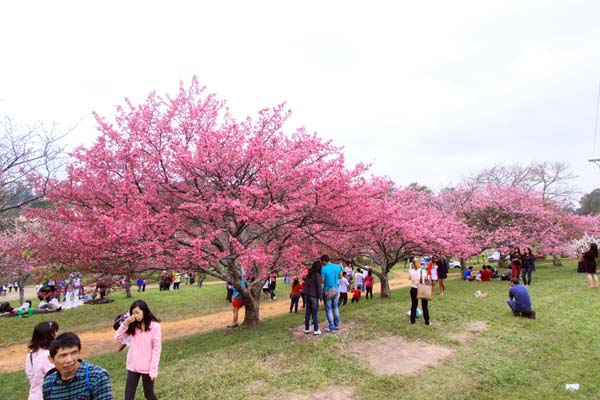

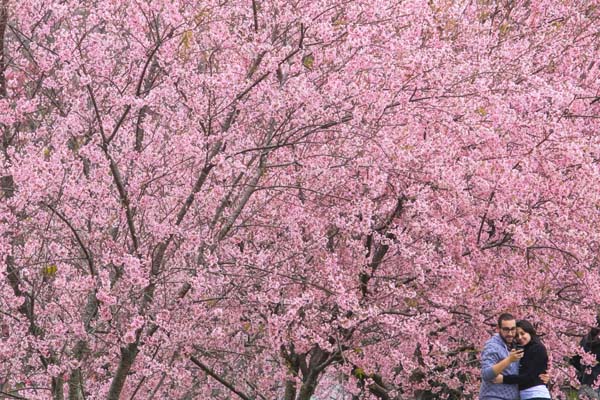
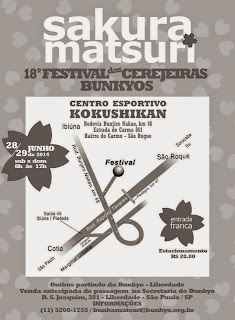
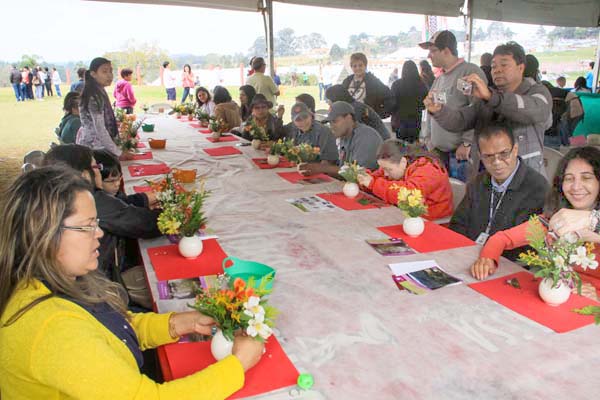
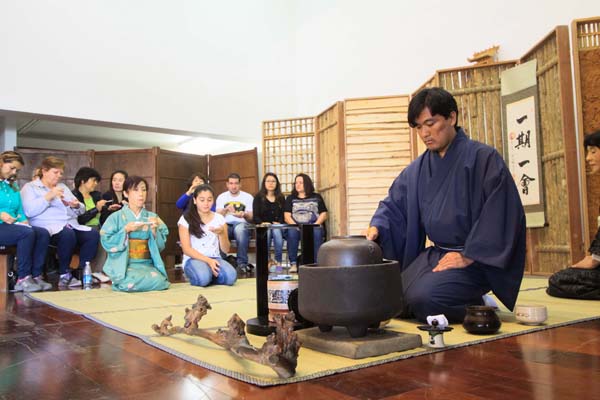
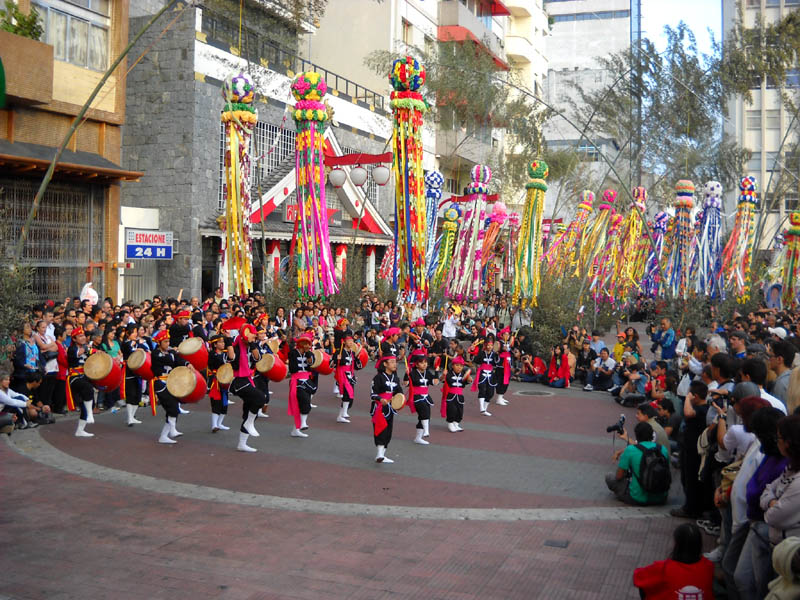








 “Why do you study Tea?” This is a question I ask myself as often as I am asked. The usual answers perhaps are enough: “It is an aesthetic exercise; a Zen discipline; a unique means of social interaction.” Yet, I have wondered if there might be some other attraction to Tea; something not so apparent; something which, in particular, captivates the imagination of the non-Japanese participant. What I present here are a few personal observations and speculations concerning a possible connection between Mythology and Tea Ceremony.
“Why do you study Tea?” This is a question I ask myself as often as I am asked. The usual answers perhaps are enough: “It is an aesthetic exercise; a Zen discipline; a unique means of social interaction.” Yet, I have wondered if there might be some other attraction to Tea; something not so apparent; something which, in particular, captivates the imagination of the non-Japanese participant. What I present here are a few personal observations and speculations concerning a possible connection between Mythology and Tea Ceremony.




 After eating the sweets, the guests go back to the outside waiting area to rest their legs. During this time the host removes the scroll and places a container of flowers in the tokonoma. Flowers for Tea are placed in a container, not arranged. They should look as they did while growing in the field. The charcoal under the kama has ignited and is burning well. The water in the kama begins to simmer and gives off a gentle sound called matsukaze (wind in the pines). The host places a jar of cold water (mizusashiji) next to the furo and in front of it a ceramic container (cha-ire) of powdered green tea (koicha) in a silk bag (shijifuku).
After eating the sweets, the guests go back to the outside waiting area to rest their legs. During this time the host removes the scroll and places a container of flowers in the tokonoma. Flowers for Tea are placed in a container, not arranged. They should look as they did while growing in the field. The charcoal under the kama has ignited and is burning well. The water in the kama begins to simmer and gives off a gentle sound called matsukaze (wind in the pines). The host places a jar of cold water (mizusashiji) next to the furo and in front of it a ceramic container (cha-ire) of powdered green tea (koicha) in a silk bag (shijifuku).

























































